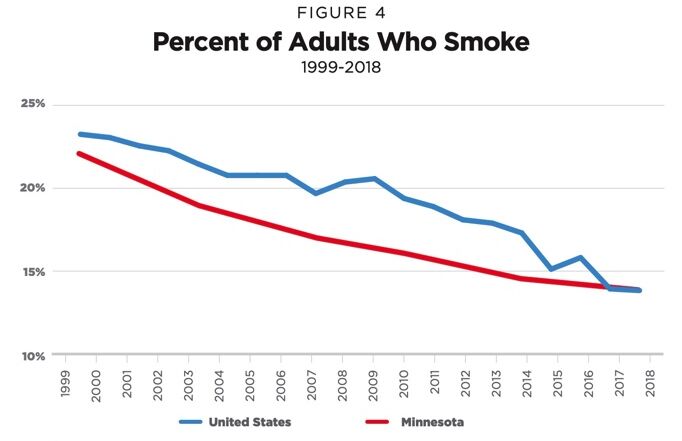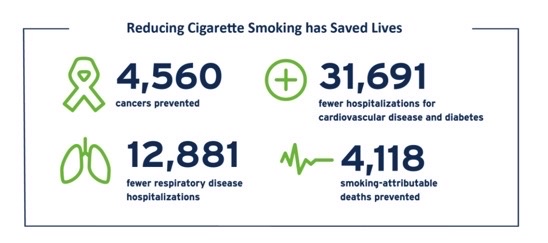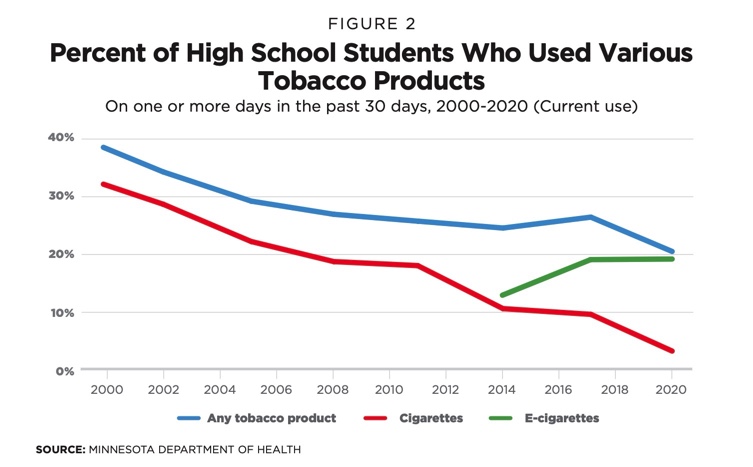Why it is counterproductive to demonize electronic cigarettes
In 1999, 23.3 percent of adults in Minnesota reported smoking a cigarette. By 2018, that number was down to just 13.8 percent. Similarly, in 2000, 32.3 percent of Minnesota high school students reported smoking a cigarette. But by 2020, the number had gone down to 3.2 percent. Additionally, the number of teenagers reporting “ever” smoking cigarettes has been going down, showing that fewer and fewer Minnesota youth are taking up smoking.


This is something worth applauding. As a study from the Minnesota Department of Health (MDH) shows, reduction in smoking benefits public health by reducing smoking-related deaths and diseases.

So what has caused this positive trend? For one, increased awareness of the dangers of cigarette smoking has been a major contributing factor to cigarette quitting rates. The surgeon general’s report, for example, started a successful anti-smoking campaign that continues to save lives to this day.
More recently, increased access to information has not been the only reason for reduced smoking. Research evidence shows that the introduction of cigarette substitutes like e-cigarettes and other vaping products has been a contributing factor in getting smokers to switch or quit. This trend has been especially pronounced among the youth. Numerous studies have reported a decline in cigarette smoking associated with increased e-cigarette use.
Data from the MDH supports this trend. In 2020, even after accounting for increased e-cigarette use, total tobacco use was significantly lower compared to 2000, mainly due to the notable decline in smoking.

The MDH has called vaping among the youth an epidemic. And in the last legislative session, our lawmakers presented numerous proposals, specifically geared towards reducing tobacco use, especially vaping among the youth. Just recently Bloomington voted to ban the sale of flavored tobacco products including e-cigarettes beginning next year.
The evidence, however, heavily suggests that e-cigarettes can effectively be a weapon in reducing smoking-related deaths. Indeed there are possible risks to consuming e-cigarettes. But as research has shown, those risks are significantly lower compared to those incurred when smoking. Not to mention, the fact that e-cigarettes have been instrumental in getting smokers to quit.
Going forward, Minnesota policymakers need to enact an effective tobacco policy. And that is unlikely to happen unless they stop demonizing e-cigarettes and recognize them for the life-saving tool they could potentially be.